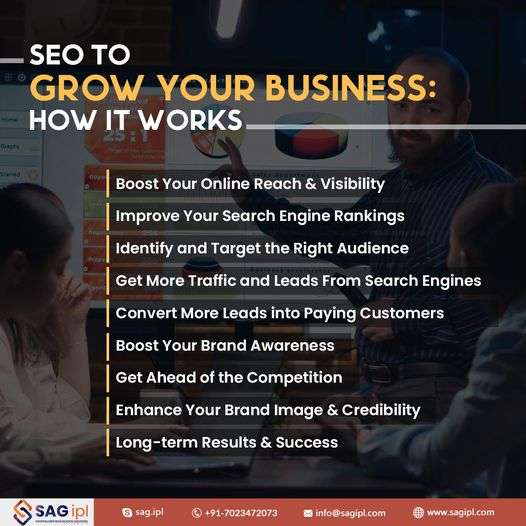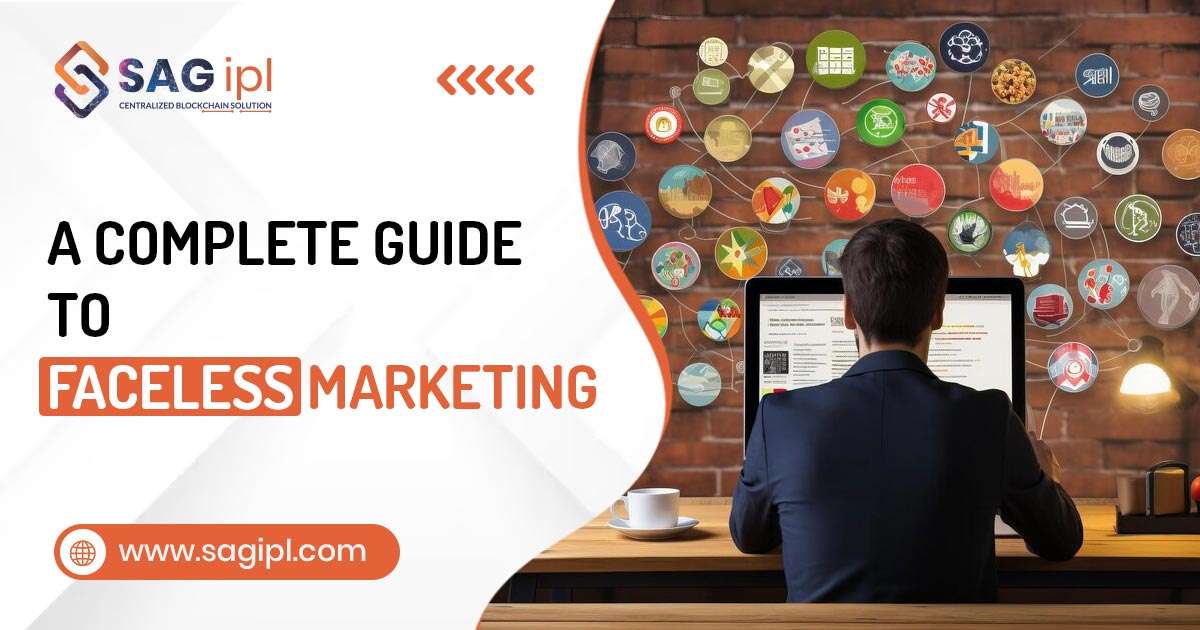The rules of marketing have changed. With increasing competition in every space and consumers moving online in search of better products or services, brands are forced to turn towards newer, better ways to attract customers. Digital Marketing is one of them. Faceless Marketing is a branch of digital marketing that involves promoting without a substantial person or influencer.
For years, influencer marketing has ruled the internet, with so-called influencers considered trusted authorities for product recommendations and professional advice. But, things are changing now. Consumers are now looking beyond influencers and considering factors such as brand identity and quality when making their purchasing decisions. This is where faceless marketing comes in.
Need Faceless Marketing Services? Fill out this form!
Faceless Marketing is all about marketing a product or service without using a prominent face or figure. Instead, this approach involves focusing on brand identity, messaging, values, and quality to catch user attention and promote long-term loyalty. The idea is to promote without highlighting a particular name or person to avoid the risk of reputation damage.
One more benefit is that it puts brand value and identity at the forefront of marketing rather than trying to leverage personal influence. This levels the playing field, enabling every kind of business, including small companies and enterprises, to boost their marketing results through quality content and strategies.
Definition of Faceless Marketing
Faceless Marketing is a digital marketing strategy that leverages the product or service’s quality and the brand’s core values for promotion rather than using famous individuals or influencers to increase sales.
This marketing technique involves promoting the features and benefits of the product through quality content without associating it with a person. The idea is to highlight the product’s unique qualities rather than leveraging a person’s influence, which can help attract customers who are genuinely interested in your offering.
Examples of faceless marketing strategies may include social media marketing to strengthen the presence of a brand, content marketing to highlight and promote unique selling points, storytelling, automated customer service, and direct interaction with customers.
How it works
Rather than using influencers to approach or connect with potential customers of a brand, it focuses on directly approaching customers through the brand’s official website and social channels.
Marketers promote products/services through personalized content highlighting the brand’s core qualities and values, which helps build deeper connections and results in more genuine customer interactions, leading to increased brand loyalty.
Importance and Relevance of Faceless Digital Marketing
While influencer marketing was once a popular digital marketing strategy for businesses to attract new customers, its charm has faded over time due to the lack of genuineness and increased instances of paid recommendations. It is superior because it focuses on quality and value over paid endorsements.

It is a perfect strategy for businesses that are wary of their market image and cannot risk maligning their reputation by associating themselves with fake or irrelevant influencers. They instead favour promoting through their brand values and product qualities.
Faceless marketing is generally more affordable than paid celebrity endorsements. By saving on the high fees of influencers, you can allocate more resources towards more impact marketing methods including content creation and direct promotion.
Faceless marketing is a brilliant tool for maintaining the integrity of the Internet and ensuring that the online space isn’t filled with only paid advertisements and celebrity endorsements. Prioritizing content and quality over paid reviews ensures people can find organic, authentic recommendations.
Other advantages include:
- Enhanced scalability and reach
- Increased brand recognition
- Reduced costs
- Improved resource allocation
- Brand consistency and reliability
- Minimization of personal bias
- Reduced probability of human errors
- Accessibility and convenience for consumers
Strategies & Techniques for Effective Faceless Marketing
The core principles of faceless marketing services that impact the effectiveness of a strategy include brand consistency, community engagement, focus on product quality, value-driven content, and creative marketing.
At SAG IPL, we use the above marketing principles to offer personalized digital marketing services based on the particular goals and needs of our clients. This is the best marketing strategy for businesses without a prominent face or influence, and SAG IPL is the best digital marketing company. Contact us to learn how we can help your business grow with a successful digital strategy.
1. Building a Strong Brand Identity With a Consistent Voice
The key to success in faceless marketing is maintaining consistency across all your content and promotional efforts. Without a face, your online branding strategy is the actual driving force attracting people to your business. To make sure that your brand has a positive online image and isn’t perceived as unreliable or unauthentic, start with building a strong online presence for your business.
Depending on your business niche and type, you can get your business listed on relevant sites and directories. Claim your Google business profile and create official channels/pages on all popular social networking sites, giving potential users more opportunities and ways to interact with your brand.
Using consistent information, style and voice across all your marketing channels, including content, online listings and social media, will make it easy for customers to identify and remember your brand.
2. Leveraging Content Without Personification
After hiring a faceless marketing company, your focus is more on the product (or service) rather than a person. Research the product you’re promoting to understand its features, benefits and unique selling points. Identify your target markets and audience and understand their needs.
Create personalized content addressing the particular needs of your target customers. Tell them how your product or service is better or how it can help with a particular problem they’re facing.
Incorporate storytelling into your content strategy. Tell your brand story or mention a use case of how your product helped a customer and made life easier for them. Create narrative-driven content by using real examples of customers or instances when your product saved the day.
It involves creating content that focuses on a product’s core features and benefits without all the clutter. People are not required to follow or rely on a third-party influencer to interact with a brand.
3. Using Anonymous Characters or Brand Identities
If you feel like you have to use some identity or give a face to your business, use anonymous characters or mascots instead of real persons. This saves the need to hire influencers or put your own face out there and is a great way to build a brand identity that is easy to remember.
Choose a character that resonates with your brand’s values and messaging and can promote your ideas in a way that’s interesting and memorable.
You can use this unique character across all your marketing campaigns and materials to maintain consistent branding and allow customers to remember your brand. This way you leverage the best of both worlds, the allure of personality-based branding with the obscurity of faceless marketing.
4. Connecting and Engaging with Customers Directly
When using faceless marketing, you are not going to use a famous personality or influencer to promote your brand or products. That leaves you with the option, or maybe the opportunity, to connect directly with your customers and engage with them through curated content.
To better engage with customers, find out more about your target audience, their problems, interests and expectations and create your content and strategies around how your product/service can help them.
Use social media to connect with your audience directly, answering their questions, entertaining them with funny posts and interesting content, and fostering engagement through personal interactions, ask-me-anything, quizzes and other creative content.
Utilize the comment section and messages to interact with your customers. Always respond to their queries and provide a resolution as soon as you can. Rather than relying on automated messaging too heavily, add a personal touch to your customer interactions by employing real support persons, who can provide curated responses based on particular concerns of clients.
Your official company blog is another good place to interact and engage with your audience. Write high-quality articles on topics that resonate with your target customers. Keep the comment section open and respond to user comments, encouraging healthy interactions.
Promote your product/service discreetly in your content and communication while keeping the focus on user experience.
5. Search Engine Optimization

Business growth SEO involves optimizing a business or website with a focus on improving its search engine visibility and rankings to generate more traffic and leads from search results. This is a great organic marketing tool for businesses seeking to promote without the help of influencers.
SEO focuses on optimizing a business website to make it more friendly to its target audience and search engines, which may help improve search rankings.
This involves creating user-focused content with targeted keywords to help potential customers with their questions and use it to promote a product or service and get high-quality backlinks from relevant websites.
By creating and optimizing content for target users, brands can build their online credibility and boost their search engine visibility and rankings. This helps them get more organic traffic and leads without needing influencers.
In addition to SEO, businesses can also use pay-per-click advertising and search engine marketing (SEM) to promote their products and services to a specific set of customers in a geographical region through keyword research and targeted ad campaigns.
6. Encouraging User-generated Content
User-generated content, or UGC, refers to content created by customers about a brand, product or service. Examples include product reviews, company reviews, video testimonials, and comments on blog posts and social media.
When using faceless marketing for your brand, UGC can be a powerful tool to help you stand out and highlight your unique features and advantages. For example, you can invite your customers to write reviews on your Google page or post a video testimonial for your website or social channels to motivate and educate other users.
Engaging with customers’ posts and comments on social media about your brand or product/service, whether negative or positive, is a good way to show that you care about your customers and what they think about you. If they’re happy, ask them to share a review. If they’re unhappy, provide a resolution to their concern.
UGC is a great way to grow your brand reputation through social proofing and build and grow your community of loyal fans to help shape the brand image.
7. Monitoring Consumer Feedback
Monitoring consumer feedback and mentions of your brand, products and services across the internet is a good way to understand your brand’s market perception, like what people think about your company or product, how they perceive your brand, and whether they recommend it to others.
While monitoring and analyzing customer feedback, you need to find ways to adapt your brand and offerings to meet customers’ expectations and match the ongoing trends.
Beyond your own brand, research your industry and target markets to understand your audience and what similar products they’re buying. Read their feedback about these products to understand their drawbacks and use this data to create or improve your own product to offer customers a better choice.
Conclusion
Faceless marketing is a brilliant branding tool for businesses that value their privacy or care too much about their brand image to trust it with third-party influencers.
This type of marketing involves the use of creative content and strategies, such as user-generated content, brand symbols, and search engine optimization, to promote a brand’s core values and unique features of its product or service rather than a person’s face to attract customers.
If you need help building a personalized faceless marketing strategy for your brand or want to hire a professional digital marketing agency, contact SAG IPL to discuss your requirements with a specialist. It’s FREE!






![Fintech Marketing Services to Drive Business Growth [2024] Fintech Marketing](https://blog.sagipl.com/wp-content/uploads/2024/02/Fintech-Marketing-250x150.jpg)




